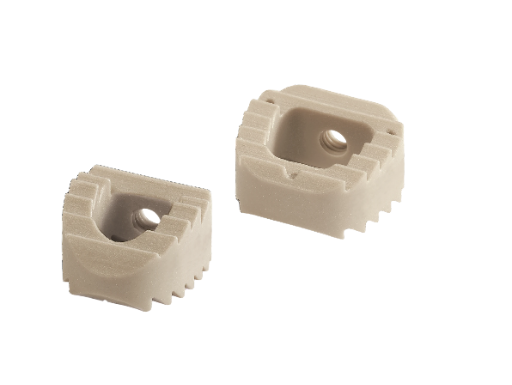E-mail iNfo@virkortho.shop Number +92-300-7477492

Cervical Cage
Cervical Cage Introduction
Cervical spine problems that cause discomfort, nerve compression, and instability can be crippling. Thankfully, improvements in spine surgery have given rise to efficient treatment methods that can reduce these symptoms and reestablish spinal stability. One such development is the cervical cage, an medical implant created to encourage fusion and speed up the healing process.
A cervical cage, often referred to as an intervertebral cage or a cervical interbody cage, is used in spinal surgery to treat several diseases that affect the cervical spine (the area of the neck). It is intended especially for cervical interbody fusion surgeries. Its primary objective is to restore the height and alignment of the affected vertebrae, promote bone growth, and stabilize the cervical spine.
Cervical Cage Sizes
Cervical cages are built of biocompatible materials such as titanium or polyetheretherketone (PEEK). These materials have outstanding biomechanical qualities, allowing for long-term stability and integration with the surrounding bone. The cages come in a variety of sizes and shapes to meet diverse patient anatomy and surgical needs. To promote bone growth and fusion, the cage’s surface may be porous or rough.
Cervical Cage are available in various sizes such as.
Diameters: 4mm, 5mm, 6mm, 7mm, 8mm, 9 mm and 10 mm
Length: 13mm
Width: 16mm
Cervical cages are used to treat a variety of cervical spine disorders, such as degenerative disc disease, herniated discs, spinal stenosis, and instability. These problems frequently cause discomfort, restricted mobility, and nerve compression, needing surgical intervention to alleviate symptoms and restore spine functionality.
The cervical spine is made up of many vertebrae that are connected by intervertebral discs. These discs operate as cushions in the neck, allowing for movement and flexibility. Degenerative disc disease, ruptured discs, spinal stenosis, or instability, on the other hand, might cause discomfort, nerve compression, or spinal instability. A cervical fusion surgery may be required in such circumstances.
Cervical Cage Advantage
Cervical cages provide various advantages in spinal surgery. For starters, they provide instant structural support and stability to the spine, relieving pain and avoiding further degeneration. Second, the cages promote bone development and fusion between adjacent vertebrae, which aids in the healing process. Furthermore, the use of cervical cages eliminates the necessity for traditional bone graft harvesting, decreasing donor site morbidity and associated problems.
During cervical fusion surgery, the injured disc or a section of it is removed to decompress the nerves, and the empty disc space is replaced with a cervical cage. The cage functions as a spacer, restoring the height and normal alignment of the afflicted vertebrae. It provides support, allows for fusion, and encourages the formation of new bone between the adjacent vertebrae.
After removing the injured disc, the surgeon usually inserts the cervical cage into the disc space. To facilitate fusion, the cage may be filled with bone graft material, such as autograft (bone obtained from the patient’s own body) or allograft (cadaveric or synthetic bone substitute). The surrounding bone grows into and around the cage over time, forming a strong fusion mass and stabilising the spine.
About
Exceptional orthopedic instruments and implants from Pakistan.
Contact
Portfolio
© 2025 All rights reserved.
Location
Quick Link